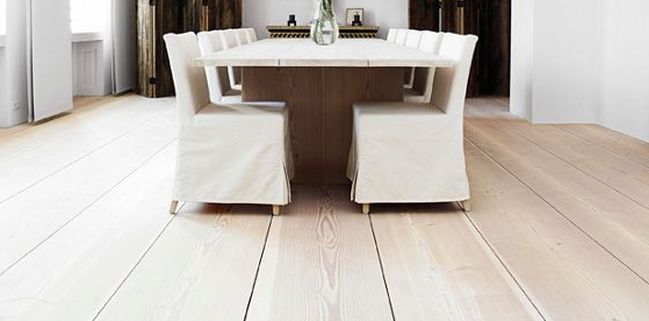
In most homes with some humidity variations during the year wood flooring responses by contracting and expanding. Sometimes these changes are clearly noticeable. Wood contracts during dry weather and expands during humid, warm weather. These movements are normal characteristic of wood flooring and it never stops.
Some separation between the boards can be seen very often. In winter when the air is dry and homes are heated wood flooring gives up some if its moisture – therefore it shrinks. During that process small gaps can appear. Homeowners shouldn’t be worried about it – it is acceptable, there is no need for calling contractors or installers. In spring, when indoor heating goes off and the environment inside the house reclaims moisture major number of these gaps will close up.
During winter months “cracks” can easily develop to the thickness of ca. 1mm. Wood-tone finished, darker floors will show cracks less than pale, lights stained floors (like maple).
Cure for gaps
In order to keep winter time shrinkage (and gaps) under control you basically have 6 options – two deal with the moisture and four with the wood itself.
Wood flooring issues
Right flooring –engineered wood flooring is much more stable than solid wood, but we suggest that manufacturer’s recommended relative humidity level is maintained at your property.
Narrow boards will shrink less than wide boards for given change in moisture content. 220mm wide plank will shrink twice as much as 110mm wide one. Therefore the size of the gap between 220mm boards will be twice as big as the gap between 110mm boards. More joints mean more spaces to distribute gapping.
Some species are more stable than others. For example 189mm hickory plank will shrink more than the same width red oak board.
Quartersawn flooring shrinks about half as much as flat sawn flooring so quartersawn flooring will have smaller gaps.
So the best approach is to choose narrow, quartersawn wood flooring made of stable species.
Moisture issues
Other approach to winter gapping is to address moisture issues. In order to reduce winter gaping reduce the annual range of moisture levels – don’t let the relative humidity levels inside your property to drop dramatically.
Reduce ventilation during the winter times. When you bring colder outside winter air in to the house and warm it up the relative humidity of the house drops dramatically. To get that air relative humidity level up to something respectable you would need to add moisture or limit the ventilation.
The other option to consider during the dry period is to add the moisture to the air by using humidifiers, add humidity by opening the dishwasher after a rinse cycle or by switching of a bathroom fan.
Sum up
So to sum up we should not fault wood flooring for being wood flooring and for what it does. Second, we can’t make dry, cold air wetter and not hurt houses. But we have few options to prevent seasonal gaps.
Solution 1: Use stable species and narrower quartersawn boards (or combination of these features).
Solution 2: Pick the right product that can handle low relative humidity environments.
Solution 3: As an owner you can take steps to reduce ventilation rates, add humidifiers.
If you have any further questions regarding expansion gaps or you are looking for an advice about the best flooring options for your home feel free to contact the ESB sales team. Contact us now to request your no hassle no obligation free samples or come down to our North London showroom for a closer look.
Pictures: Pinterest
| Mon-Fri | 8:00AM – 5:00PM |
| Saturday | 10:00AM – 4:00PM |
| Sunday | 11:00AM – 3:00PM |





.svg)
.svg)